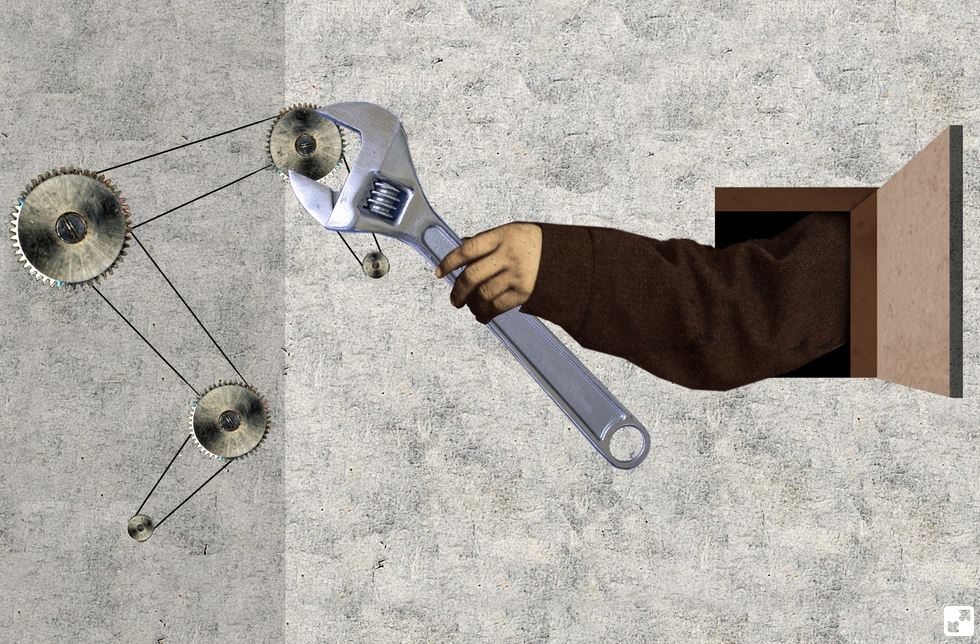3 Common PBL Problems—and Solutions
Ideas for how to overcome issues that teachers new to project-based learning frequently encounter.
Ineffective project-based learning (PBL) experiences, students are actively engaged in decision-making, confidently manage their team’s shared accountability, and develop quality products and performances. Many schools achieve this success, while others struggle. When a PBL unit doesn’t achieve the expected outcomes, the teacher, especially if they’re embarking on their initial attempt with PBL, may find that their difficulty arises in one or more of those three common areas.
Luckily, addressing such issues and improving PBL experiences to create deeper and more rewarding student experiences is, if not easy, at least very achievable.
Problems in Group Dynamics
PBL is a great structure for students to practice collaboration within teams. Done well, group work guides team members to help each other understand the content and tackle complex tasks that build a deep knowledge of core concepts.
Problems occur when some students do most of the work. The team collaborates on not working together. Sometimes this happens because one or more students refuse to do the work. Other times it happens because one or two members do not want others involved, fearing that their grades will be damaged by the efforts of peers they perceive as having lesser skills.
Solution: Make all graded assignments individual tasks—don’t give any grades for group work. Taking grading out of the equation enables students to focus on the work without concern that peers’ efforts might affect their grades, and it encourages all students to participate. Teams work together to collect data and complete tasks for the purpose of building understanding through mutual support. Students take the results from the collaborative work to complete individual assessments. Ultimately, each learner must show what they know and do not know.
Three strategies for supporting students in working together effectively:
- Establish guidelines that include roles and responsibilities.
- Provide criteria and logistical checklists for each role.
- Coach students on how to collaborate.
Another reason not to have group grades is to eliminate false data. With group grades, students who do little work or who don’t participate may get a higher grade than they should be based on true performance. Such grade inflation hides gaps in concept learning. The teacher lacks accurate data to help the student grow, creating later struggles with progressively complex skills because of missing foundation knowledge. And learners who do high-quality work may get a low grade because of the work done by other team members, leading the teacher to see phantom gaps in learning that do not exist. This assessment fog creates extra and unnecessary work for the teacher.
Lack of Student Engagement
Lack of student buy-in can occur when a project behaves like a traditional unit. A common clue is the types and purpose of the assigned products. Products presented in class or posted on school walls are a good start, yet PBL units can be so much more valuable to students when they are developing answers and products for a person, group, or organization who will value the finished work.
Solution: Put a face to the audience. Make student work truly public. Dayna Laur, the author of several books on implementing PBL, says, “Use experts to design challenges and provide feedback to learners.”
Invite someone to tell students how much their search for solutions or ideas will be important for that person or organization. Meeting face-to-face or virtually has the powerful effect of giving students’ work a larger purpose. You can bring in experts or people affected by a problem that students are exploring, or set up video calls for this purpose. Guide students to see themselves as working in the profession so that their practices are authentically connected.
If possible, invite these sources to listen—in person or via video meetings—to students’ progress reports and give feedback, and then have students close the project with a presentation or publication provided to the outside audience.
Students Are Not Used to Active Learning
Many students feel like passive participants in their education—and many educational experiences lead them to that—so teachers who want to set up powerful PBL experiences first need to guide students to take the lead in their learning.
Solution: Include student voice above choice. People own their learning when they have decision-making on what and how they are learning. Giving choices is a starting point, not the final solution. Choices are designed by the teacher. Once students design their own choices within the PBL structure, they have more buy-in to truly express themselves.
Here are some ways to empower a student’s voice:
- Provide assessment criteria and leave the product format open-ended, so students can choose, for example, to make a short film or produce a newsletter or write a traditional essay—any product that meets the criteria is OK.
- Use protocols that enable students to lead the learning activity, such as Chalk Talks, a silent discussion on chart paper, or Save the Last Word for Me, a small group reading-comprehension discussion protocol.
- Have students establish norms for what professional behaviors look like in the classroom. Then empower them to monitor and support each other.
Implementing these three fixes should engage your students, resulting in a powerful, authentic learning experience when they undertake a PBL unit.
Source: https://www.edutopia.org/article/3-common-pbl-problems-and-solutions




